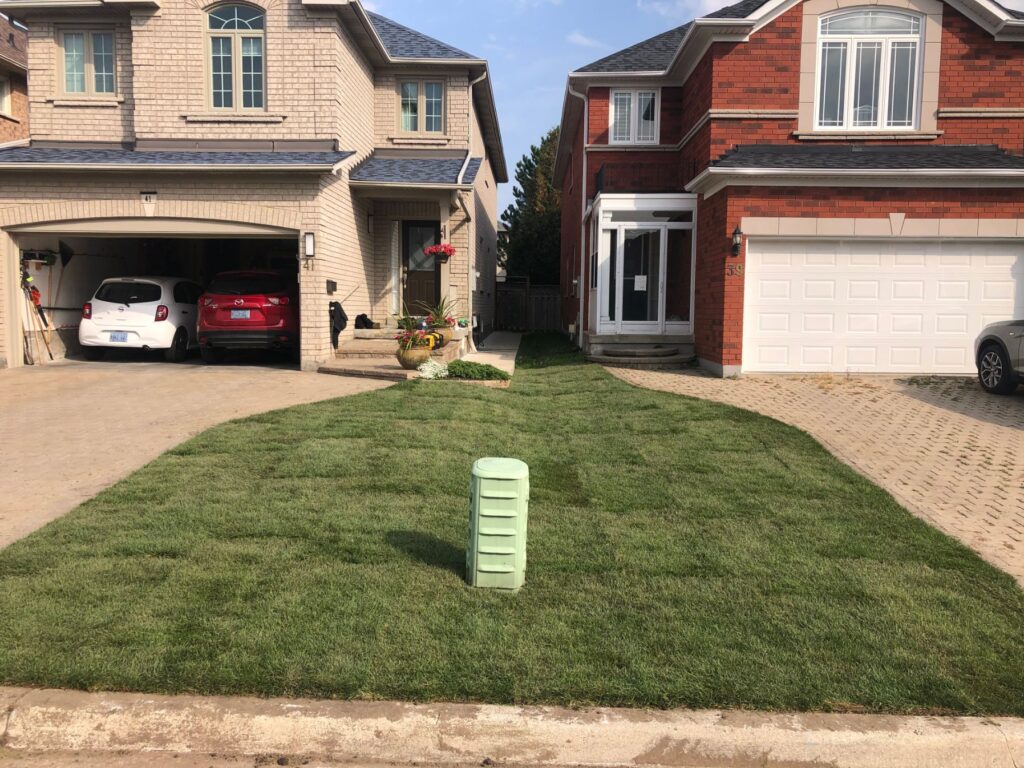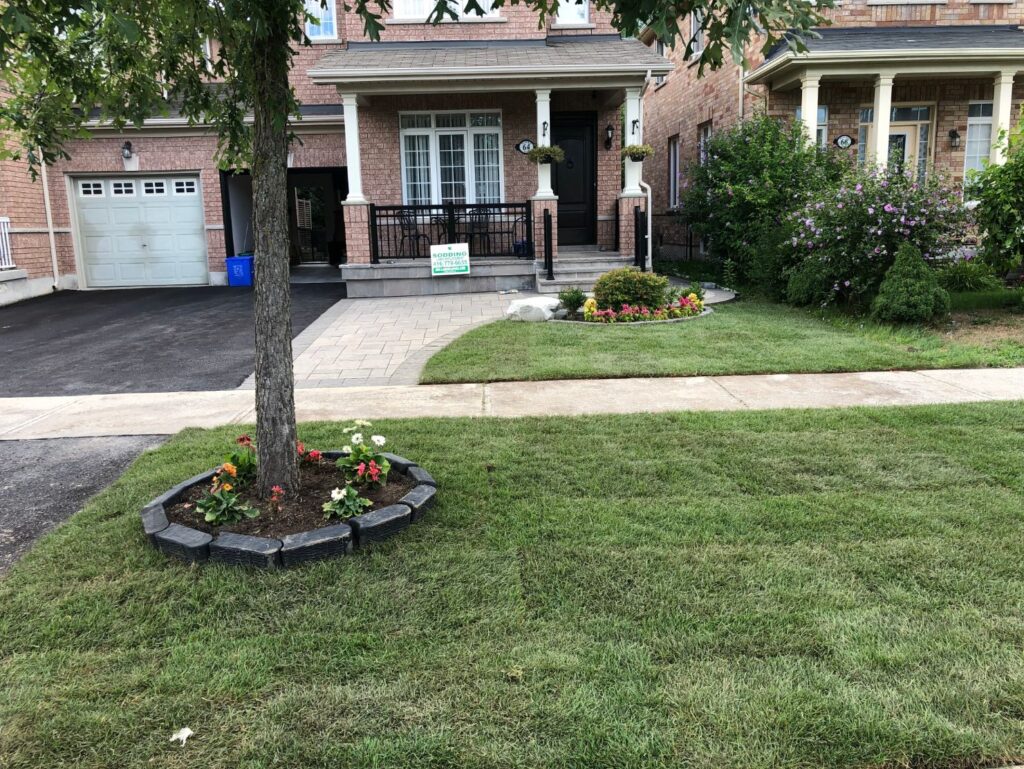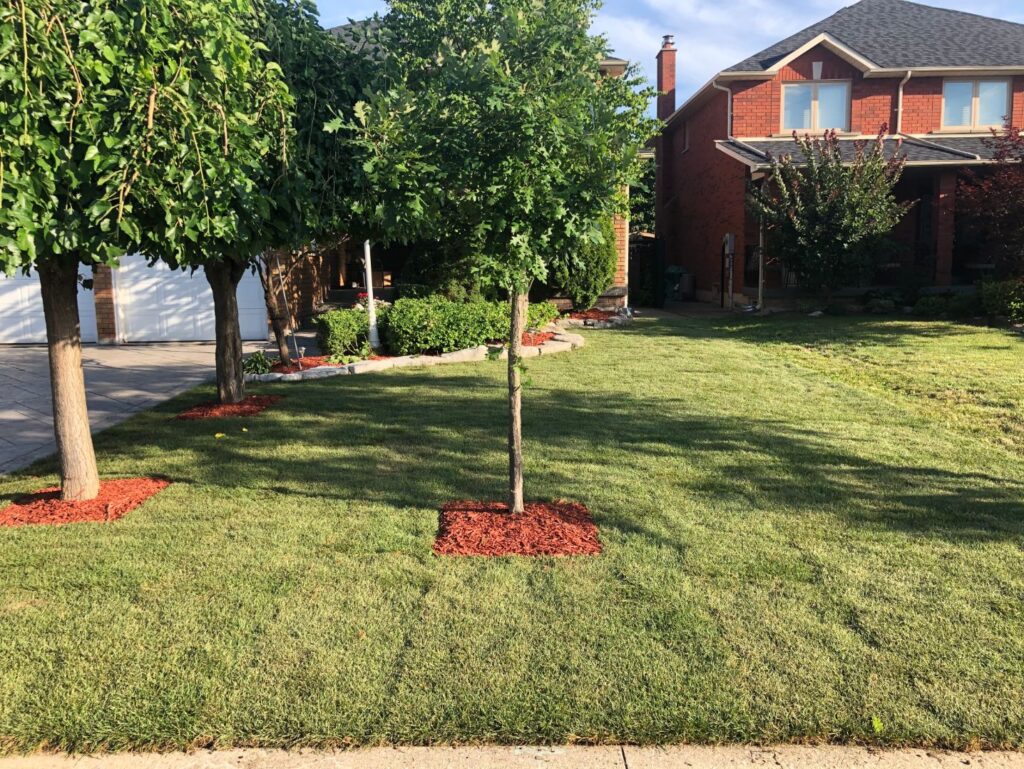You just moved into a new house in the winter, and can’t wait to use the backyard. Turns out, the grass is all dead and full of weeds. Laying sod over existing grass might seem like a tempting shortcut, promising a vibrant green carpet rolled out before your eyes. However, this option can quickly turn into a landscaping nightmare. We’ll explore the challenges of laying sod over existing grass, explain why it’s not the best course of action, and guide you toward better alternatives.
Key Takeaways
- Laying sod over existing grass is not recommended.
- Kill any existing grass or weeds before planting new sod.
- Other ways to remove current grass are to mow it short, cover it with black plastic, or use herbicides.
- Potential problems with laying sod over existing grass include root barriers, competition for resources, uneven appearance, and drainage issues.

Do You Have to Kill Old Grass Before Laying Sod?
A common question among homeowners is whether they can simply lay sod over their existing grass. While it might seem like a time-saver, the answer is generally no; you have to kill old grass before laying sod.
The new sod and the current grass will be in strong competition for water and nutrients. Together, they’ll weaken, making the yard look patchy and sick. The grass roots that are already there make a barrier that stops the roots of the new sod from getting into the dirt properly. Lack of proper root development can make the sod dry out and die.
Best Time to Lay Sod (in Toronto & GTA)
For Toronto and the GTA, the best time to lay sod is in the spring or fall, when the ground is cool (10°C to 20°C). Installing sod at the right time and in the right weather can greatly improve your chances of success and make sure your lawn grows quickly and healthy.

Quick Ways To Remove Existing Grass:

Can You Put Sod Over Existing Grass?
The short answer is no; you should not lay sod directly on top of existing grass.
As we already talked about, the current grass roots make a barrier that stops the roots of the new sod from properly entering the dirt. The new sod and the grass that is already there will be competing for water, nutrients, and sunshine. This competition can weaken both types of grass, making the lawn look bad and sick.
Rare Exceptions:
Even though it’s usually not a good idea, there are a few situations where it might be okay to sod over grass.
Putting down sod might be a good idea if the current grass is very thin, sparse, and mostly dead. However, it is very important to examine the current state of the grass carefully. You will still need to prepare the area, even in these rare instances.

Problems with Laying Sod on Top of Grass
If you’re thinking of laying sod over existing grass, be warned of these potential problems:
- Roots Don’t Make Contact: The old grass acts as a physical barrier that stops the roots of the new sod from reaching the dirt below. This lack of good root establishment makes the sod weaker, which makes it more likely to dry out, wither, and get dead spots.
- Sod Highly Likely to Die: The grass that is already there and the new sod will be in strong competition for water and nutrients. This intense rivalry can put a lot of stress on both types of grass, making it more likely that both will be damaged or even die.
- Uneven Appearance: Grass that is already there can make the ground below the sod uneven. These uneven surfaces can make your lawn look bad, with bumps, dips, and an overall awful appearance.
- Drainage Issues: A thick layer of existing grass can make it hard for water to drain away. This can cause too much water to collect, making a damp space perfect for root rot and other fungal diseases.
Your Path to a Lush, Green Lawn
For a healthy yard that lasts, it’s important to prepare it properly. Laying sod over existing grass often leads to challenges such as root barriers, competition for resources, and uneven growth. By removing the old grass and giving yourself a clean slate, you can give your new sod the best chance to grow. Get professional help from Sodding GTA! Our team can help you with every step, from picking out the right kind of sod to installation and taking care of it afterward. Get that picture-perfect lawn you’ve always wanted with Sodding GTA.
FAQs
In Toronto’s climate, cool-season grasses generally perform best. Our team at Sodding GTA can help you select the ideal sod for your lawn.
Typically, it takes 4-6 weeks for new sod to establish roots and become firmly rooted. Proper watering and care during this time is essential.
Some common mistakes include:
– Laying sod in extreme weather conditions (too hot, too cold).
– Not properly preparing the soil (compacting, levelling, adding nutrients).
– Not enough or excessive watering.
– Mowing too soon or too short.
